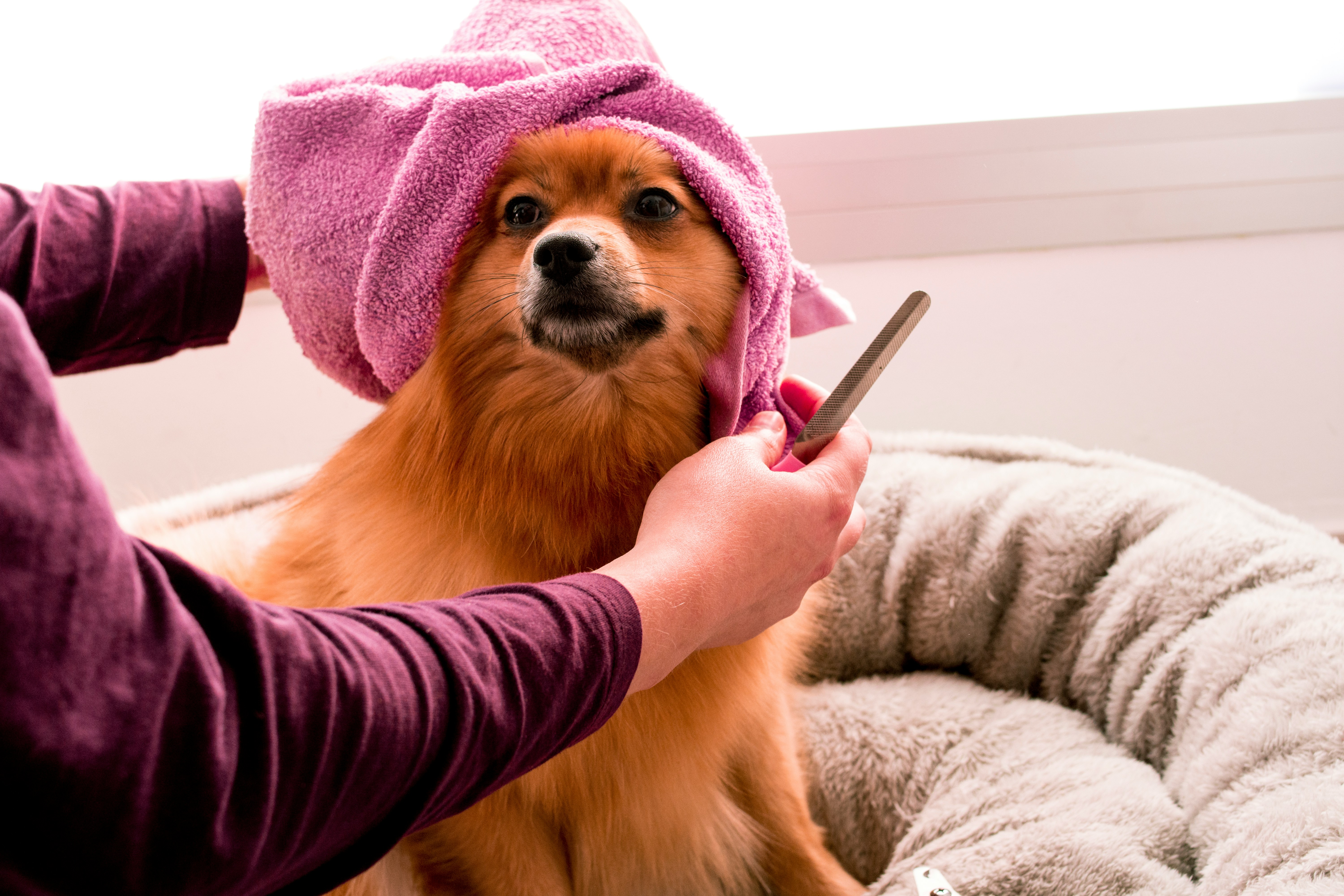Regular grooming is essential for maintaining your dog’s health and happiness. Grooming not only keeps your pet looking their best but also helps you monitor their overall well-being, identifying potential health issues early. Whether you’re a seasoned pet parent or a new dog owner, these grooming tips will ensure your furry friend stays clean, comfortable, and healthy.

- Brushing Basics:
- Choose the Right Brush: Different coats require different brushes. Slicker brushes are great for removing tangles and mats, while bristle brushes are ideal for short-haired dogs. For dogs with long, thick coats, an undercoat rake can help remove loose fur.
- Regular Brushing: Brush your dog regularly to remove loose hair, prevent matting, and distribute natural oils. For most dogs, brushing 2-3 times a week is sufficient, but some breeds may require daily brushing.
- Be Gentle: Always brush in the direction of the hair growth to avoid causing discomfort. Be gentle around sensitive areas like the belly and legs.
- Bathing Tips:
- Choose the Right Shampoo: Use a dog-specific shampoo that suits your dog’s skin type. Avoid using human shampoos as they can be too harsh for your dog’s skin.
- Frequency of Baths: Generally, dogs should be bathed once a month. However, this can vary based on their activity level and coat type. Over-bathing can strip the natural oils from their skin, leading to dryness.
- Proper Technique: Wet your dog thoroughly, apply shampoo, and work it into a lather. Rinse well to remove all soap residues, as leftover shampoo can cause skin irritation.
- Nail Trimming:
- Right Tools: Use a pair of dog nail clippers or a nail grinder. Ensure the tools are sharp and clean.
- Know the Anatomy: Be cautious of the quick, the pink area within the nail that contains blood vessels and nerves. Cutting into the quick can cause pain and bleeding. If your dog has dark nails, trim a little at a time to avoid cutting the quick.
- Regular Trimming: Trim your dog’s nails every 3-4 weeks. If you can hear their nails clicking on the floor, it’s time for a trim.
- Ear Care:
- Regular Inspection: Check your dog’s ears weekly for signs of infection, such as redness, swelling, or a foul odor.
- Cleaning: Use a vet-recommended ear cleaner and cotton balls. Gently wipe the outer ear without inserting anything deep into the ear canal.
- Hair in Ears: For dogs with hair inside their ears, plucking or trimming might be necessary to prevent matting and infections. Consult your vet or groomer for the best method.
- Dental Hygiene:
- Brush Regularly: Brush your dog’s teeth 2-3 times a week using a dog-specific toothbrush and toothpaste.
- Dental Chews and Toys: Provide dental chews and toys designed to reduce plaque and tartar buildup.
- Regular Check-Ups: Schedule regular dental check-ups with your vet to maintain your dog’s oral health.
- Coat and Skin Care:
- Check for Parasites: Regularly inspect your dog for fleas, ticks, and other parasites. Use preventive treatments recommended by your vet.
- Healthy Diet: A balanced diet contributes to a healthy coat and skin. Ensure your dog is getting the right nutrients, including omega-3 and omega-6 fatty acids.
- Moisturize if Needed: If your dog has dry skin, consider using a pet-safe moisturizer or coconut oil. Consult your vet for recommendations.
- Professional Grooming:
- Schedule Regular Appointments: For breeds that require more intensive grooming, such as Poodles or Shih Tzus, schedule regular grooming appointments every 4-6 weeks.
- Communicate with Your Groomer: Clearly communicate your preferences and any specific needs your dog may have to the groomer.

Regular grooming is crucial for your dog’s health and well-being. By following these grooming tips, you can keep your dog looking great and feeling comfortable. Remember, grooming also provides an excellent opportunity to bond with your pet and monitor their health closely. With the right tools and techniques, you can ensure your furry friend stays happy, healthy, and looking their best.

